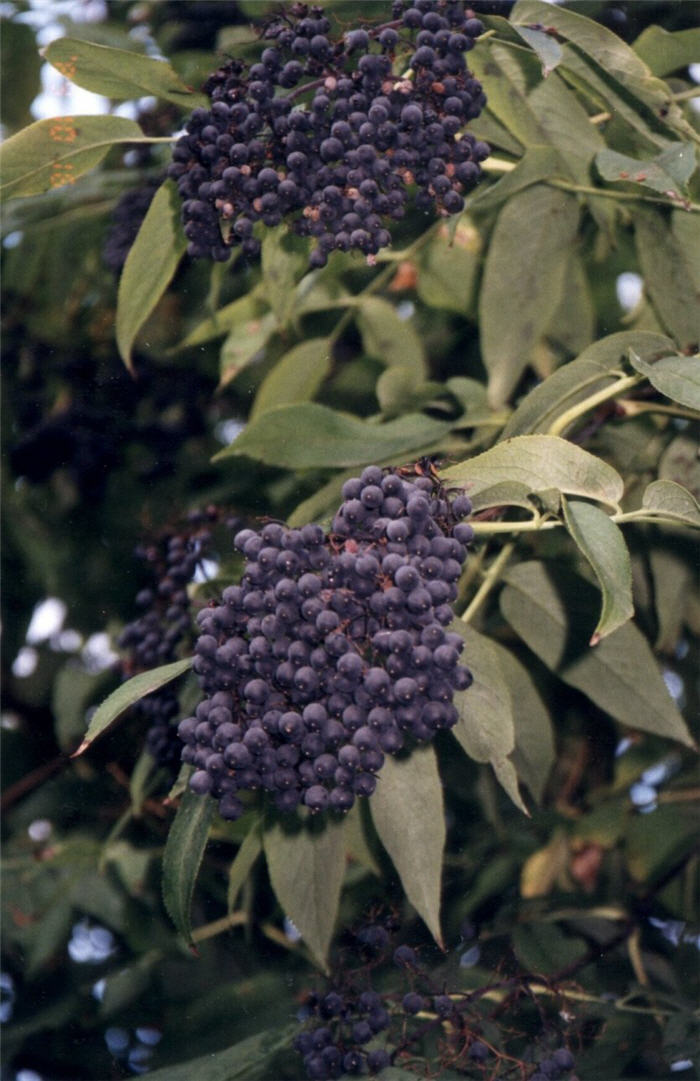| Botanical Name: Sambucus caerulea | |
| Common Name: Blue Elderberry |

-
Anatomy
-
Culture
-
Design
Plant Type
Shrub, Herb
Height Range
6-12'
Flower Color
White
Flower Season
Spring, Summer
Leaf Color
Light Green
Bark Color
Brown
Fruit Color
Black, Blue
Fruit Season
Summer, Fall
Sun
Full
Water
Medium
Growth Rate
Moderate
Soil Type
Clay, Loam, Rocky
Soil Condition
Average, Rich, Poor, Well-drained
Soil pH
Neutral, Basic
Adverse Factors
Attracts Bees, Messy
Design Styles
Meadow, Mediterranean, Ranch, Spanish, Woodland
Accenting Features
Showy Flowers
Seasonal Interest
Spring, Summer, Fall
Location Uses
Background, Shrub Border, Foundation
Special Uses
Erosion Control, Naturalizing
Attracts Wildlife
Birds, Wildlife
Information by: Stephanie Duer
Photographer:
Photographer:
-
Description
-
Notes
Blue elderberry is a large, semi-riparian, multi-stemmed shrub found in our stream corridors, growing 6 to 10 feet tall and 5 to 8 feet wide. Foliage is pinnately compounded, and a medium green, with yellow fall color. It has attractive clusters of white flowers (April thru July), followed by clusters of small blue-black edible fruit. Berries are used to make wine, jellies, jams, and pies. Excellent food for wildlife and birds. A Utah native.
Grow in sun to part shade, in rich, well-drained soil. Clay loam or gravelly-loam soils are ideal. Requires regular irrigation and occasional renovative pruning (see Guide for pruning tips). It is not well suited for dry landscapes, but is still a great selection for a moderate-water landscape or inclusion in an edible garden.